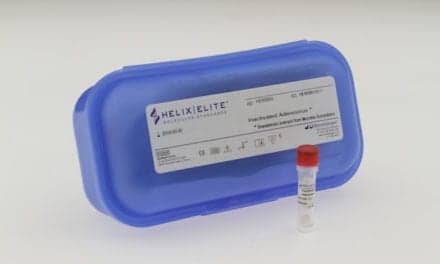A research team has shown that the severity of the clinical symptoms of schizophrenia is strongly linked to blood biomarkers related to the deregulation of neuronal mitochondria.
Psychotic symptoms are a characteristic clinical manifestation of schizophrenia. They go hand-in-hand with an increase in oxidative stress, which results in a damage of a particular type of neurons, called parvalbumin neurons. This deterioration leads to a dysfunction in the activity of the prefrontal cortex, a region of the brain that is involved in cognition. A new study has shown in an animal model, that the cellular mechanism for recycling mitochondria is deficient in parvalbumin neurons.
The study – published in the journal Molecular Psychiatry – investigated the underlying biochemical mechanisms, pinpointing two key molecules, miR-137 and COX6A2, that can be detected in blood.
When used as biomarkers in patients diagnosed with psychosis, they allow to determine two distinct clinical sub-groups with different severity of symptoms, of cognitive deficits and functioning in everyday life. This discovery represents a major breakthrough for stratifying individuals suffering from schizophrenia, whose heterogeneity of symptoms currently restricts diagnosis and treatment.
The study was conducted at the Centre for Psychiatric Neuroscience of the Lausanne University (UNIL) and the Lausanne University Hospital (CHUV), and supported by the National Centre of Competences in Research Synapsy.
“We know that an essential antioxidant produced by the human body, called glutathione, is deficient in schizophrenic patients,” says Kim Do, researcher at UNIL/CHUV Centre for Psychiatric Neuroscience. “This deficiency and the resulting imbalance between free radicals and antioxidants (called redox dysregulation) lead, among other consequences, to an alteration of parvalbumin neurons, a type of neurons that is directly involved in all cognitive functions”.
To conduct its studies, Do’s group works with an animal model of schizophrenia, in which the level of cerebral glutathione is lowered. “This animal model is not designed to mimic a human disease in all its complexity, but to reproduce a typical abnormality and investigate its consequences,” she says. Thanks to this animal model, it has been possible to observe that impaired mitochondria accumulate in parvalbumin neurons in the prefrontal cortex.
In attempts to intervene directly on the free radicals produced by mitochondria, the neuroscientists showed, in the animal model, that the alterations of the two molecules, miR137 and COX6A2, can be completely corrected by an antioxidant compound that specifically targets mitochondria, called MitoQ.
The research team was able to demonstrate that treatment with MitoQ also increases the survival and functionality of parvalbumin neurons in the prefrontal cortex. “Given these promising results, the same compound will be tested in humans as an additional treatment in the early phase of the disease. It’s an important step forward!” says Inès Khadimallah, a research fellow at Do’s laboratory and first author of the article published in Molecular Psychiatry.
By analysing the blood of patients diagnosed with psychosis, Do’s group was able to determine the levels of miR137 and COX6A2 in the brain. Using these two molecules as biomarkers, they succeeded in demonstrating that among the great heterogeneity of schizophrenia patients there are two major and distinct groups, those with and those without mitochondrial impairments.
In addition, the mitochondrial abnormalities are associated with cognitive impairments and the corresponding clinical symptoms: loss of autonomy and reduced social skills. “Patients suffering from a mitochondrial deficiency have more severe clinical symptoms than others”, says Khadimallah.
Featured image: Mouse parvalbumin neurons. Parvalbumin neurons are affected by oxidative stress in mouse model of schizophrenia. Markers of this neuropathological process can be detected in the blood of human patients, helping to diagnose and potentially treat them with antioxidant compounds. Photo: UNIL/CHUV Inès Khadimallah





